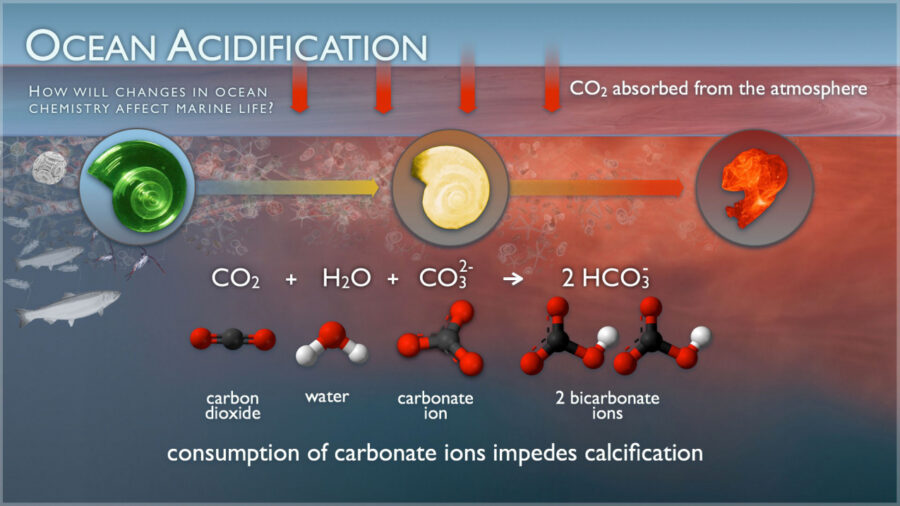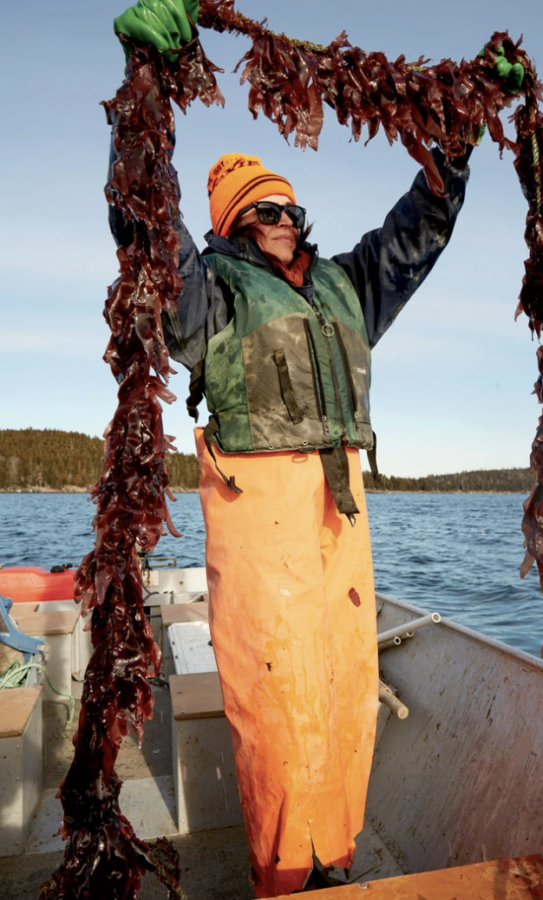#oceans
Seaweed: Why is it so important in the fight against climate change?
By TCI Youth Ambassador Sophia Esch
Many of us view seaweed as a nuisance…we hate the feeling of it touching our legs while swimming, and we don’t like seeing it strewn across the beach. But, we should look at seaweed as a resource to fight against climate change.
The rise of carbon dioxide (CO2) in the atmosphere is threatening our planet and our oceans. About 30% of CO2 present in our atmosphere is absorbed by the ocean, which has dangerous effects on reef ecosystems. When CO2 enters the water, H2O and CO2 react and form H2CO3 (carbonic acid), which decreases the pH levels of the water. This process is called ocean acidification, and it has proven detrimental to the ocean and the organisms that live in it. Shelled organisms, for example, cannot build and maintain their shells and skeletons with low pH levels.

Ocean Acidification – NOAA
While this is happening, seaweed is working to remove CO2 from the atmosphere and convert it to biomass, which is used for seaweed to grow. In the past, scientists have focused on ways to reduce CO2 emissions, but now, there is an equal focus on removing the CO2 currently in the atmosphere. According to the Intergovernmental Panel on Climate Change, we should have the goal of achieving net zero emissions of CO2. Seaweed can help in achieving this goal because of its power to remove and store carbon dioxide.
Seaweed farming has great potential for slowing the rise of climate change because of its practicality and benefits. Currently, seaweed removes 200 million tons of carbon dioxide from the atmosphere annually. This amount can be increased by implementing seaweed farming in our agricultural practices. Seaweed farming is essentially what it sounds like: growing seaweed, like kelp, in a large, underwater field. It is also great for farming because it grows extremely fast (about 30 times faster than land plants, kelp growing 2 feet per day) while benefiting other ocean organisms. It provides shelter and food for many sea creatures while preventing ocean acidification. Planting seaweed farms is a great alternative to planting forests because when trees are cut down, the CO2 is released back into the atmosphere. In addition, seaweed forests can remove up to 20% more carbon than land forests.

Maine Seaweed Exchange
There are a lot of other amazing benefits of seaweed farming. According to marine ecologist Pia Winberg, “If seaweed farming is scaled up, algae could replace plastic packaging and common animal feeds such as corn.” And, it provides a new source of food and employment. In Maine, the Center for Cooperative Aquaculture Research has supported the rising industry through compiling research, donating materials to new farmers, and developing new seaweed crops.
The possibilities are endless when it comes to seaweed farming – but we know that it can play an important role in helping us slow the rise of climate change!
Check out the resources below for further information:
Seaweed Aquaculture Industry Overview
Future Planet: The remarkable power of Australian kelp
How Kelp Naturally Combats Global Climate Change
